Innovative Strategies for Teaching Math to Kids
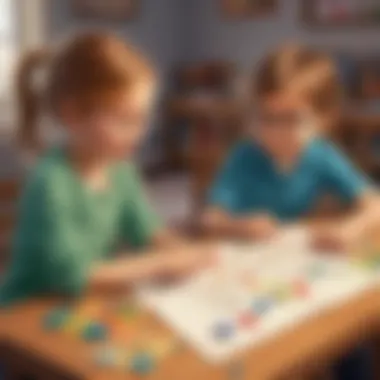

Intro
Mathematics often stirs a range of feelings in young learners. For some, it’s a thrilling puzzle; for others, a daunting challenge. To bridge this gap, educators play a vital role, specifically in making math a language that every child can understand and enjoy. The goal is to nurture this innate curiosity through innovative and engaging methods, essentially turning math into a playground of ideas rather than a series of numbers and formulas.
It's essential to recognize that typical approaches may not resonate well with every student. There lies a treasure trove of innovative techniques that can make learning math a delightful experience for elementary school children. Let’s explore how creative activities, fun quizzes, and fact-based articles can foster a love for mathematics while improving comprehension and problem-solving skills.
Understanding the Needs of Young Learners
Recognizing the unique needs of young learners is fundamental in tailoring effective math education. Each child approaches learning differently, influenced by a range of factors like cognitive development, emotional context, and social interactions. By understanding these dynamics, educators can shape a learning environment that resonates with students, making mathematics not just a subject, but a journey of discovery.
Cognitive Development in Elementary Ages
During elementary ages, children are on a steep learning curve. Their cognitive skills are blossoming, and they begin to understand abstract concepts. It’s vital to meet them at their level of understanding. For example, at age six or seven, many children are struggling with one-to-one correspondence.
To illustrate, if you present them with five apples in one hand and four in another, they may not instantly know that the two groups combine to make nine. Educators can provide concrete experiences by using physical objects that children can touch and see. This type of hands-on learning supports their cognitive growth by building a bridge between tactile experiences and abstract ideas like addition and subtraction.
Psychological Factors Influencing Learning
Young learners aren't just small adults; they possess unique psychological traits that guide their learning processes. A child's self-esteem, motivation, and anxiety levels can dramatically affect their engagement with math. Recognizing and addressing these psychological elements can create a more supportive learning atmosphere.
For instance, a student who feels anxious about being wrong might shy away from trying new problems. To counter this, creating a positive classroom culture that celebrates mistakes as learning opportunities can empower children. When students see their errors as stepping stones rather than barriers, they can grow more resilient in their approach towards math challenges.
The Role of Curiosity in Learning Math
Curiosity acts as the fuel for learning. It's that spark that drives children to ask why and how, and this is especially true in mathematics. By tapping into that natural inquisitiveness, educators can craft lessons that captivate and engage.
Consider this example: instead of merely teaching the concept of shapes through definitions, a teacher might take students on a shape scavenger hunt around the classroom. This playful exploration encourages kids to observe and discover shapes in their environment, promoting both critical thinking and enthusiasm for the subject.
"Children naturally want to learn. It is our job as educators to build pathways that guide them."
Instilling a sense of wonder can transform how children perceive math. Each problem can become a puzzle waiting to be solved rather than a chore to complete.
In sum, understanding the needs of young learners allows for the development of targeted educational approaches. It creates a more enriching learning experience, laying a strong foundation for their future studies in math and beyond.
Game-Based Learning Approaches
Game-based learning has become a cornerstone in revolutionizing the way mathematics is taught to young learners. It's not simply about playing games; it's about fostering an environment where education meets enjoyment. Young children are naturally inquisitive, which makes it essential to engage them through methods that speak to their playful nature. When math becomes a game, it encourages children to explore concepts without the weight of traditional instructional strategies that might stifle their enthusiasm.
Through game-based learning, educators can tap into a variety of essential skills. Many of these skills are not explicitly noticeable during a single play session, but they gradually build up a child's confidence and ability in problem-solving. The benefits include increased motivation and engagement, as children become active participants in their learning journey rather than passive recipients of information. They not only learn mathematical concepts but also develop critical thinking skills, teamwork, and resilience.
Incorporating Board Games into Math Lessons
Integrating board games into math lessons is more than just rolling dice and moving pawns. These games help illuminate mathematical principles through collaboration and friendly competition. For example, games like Monopoly and The Game of Life not only entertain but introduce concepts of money management, probability, and strategic thinking.
Imagine a classroom where students play a round of Sequence, where they not just place chips but also add, subtract, or multiply the numbers on the cards to earn extra turns. This not so rigid approach to math allows kids to enjoy learning without realizing they’re working through challenging concepts. Board games can lead to thoughtful discussions between peers and offer instant feedback about their understanding while keeping them engaged.
Utilizing Online Math Games
The digital era has paved the way for an abundance of online math games that can be accessed easily. From platforms like Prodigy to math games available on sites like Cool Math, the options are extensive. These games might range from simple problem-solving tasks to complex puzzles which can adapt to a child’s skill level.
What sets online games apart is the instant feedback they provide. Young learners can track their progress in real-time, understanding their strengths and weaknesses without the typical anxiety associated with traditional tests. Moreover, resources such as Kahoot! can be employed for interactive quizzes that deepen understanding while keeping the competitive spirit alive. Parents can get involved too, by setting time limits or including rewards for achieving specific goals, thus enhancing the gaming experience.
Strategy and Competition in Learning
Introducing elements of strategy and competition into math learning can bring a spark of enthusiasm that often is missing from conventional approaches. Children thrive when they are challenged, and when learning feels like a competition, it can motivate them to push their boundaries. Games that incorporate strategies in math, like Set or Blokus, demand careful consideration of their moves. They rely heavily on logical reasoning and spatial recognition, skills vital to mastering mathematical concepts.
To effectively leverage strategy-based games, educators should encourage collaborative play where students can discuss their thought processes aloud. This kind of interaction helps them articulate their reasoning and learn from their peers. Likewise, it opens up avenues for deeper mathematical conversations around strategies and problem-solving methodologies. The more they engage in such discussions, the easier it becomes for them to grasp complex math concepts in a relaxed and enjoyable setting.
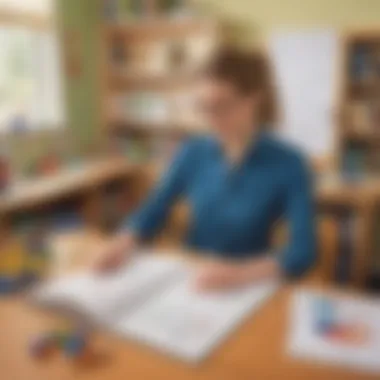

"When games bring a sense of excitement, math becomes less of a subject to dread and more of a journey to explore."
Hands-On Activities to Reinforce Concepts
When it comes to teaching young learners, hands-on activities can truly work wonders. These methods can create connections between abstract math concepts and tangible objects. Kids often learn better when they can touch, feel, and manipulate items rather than just seeing numbers on a page. Hands-on activities are not just about engaging a child's interest; they play a crucial role in deepening understanding. By using physical objects or real-life scenarios, students can grasp mathematical concepts in a way that feels relevant to their everyday experiences.
Using Manipulatives for Concrete Understanding
Manipulatives serve as a bridge that connects numerical concepts to real-world applications. Things like blocks, counters, or even everyday objects like buttons can make a huge difference. When children can physically move items to represent numbers, they begin to visualize problems more easily.
For instance, using blocks to learn addition and subtraction does not only make it easier to understand these operations, but it also adds an engaging layer to math lessons. Hands-on experience helps build a strong foundation and nurtures confidence in math skills. The key here is that these manipulatives help children see the relationships between numbers, which is essential for developing higher math skills later on.
Crafting Real-Life Math Projects
Involving kids in real-life projects can transform how they view math.
Building and Measuring
Building and measuring projects are a fantastic way to merge art, science, and math. This hands-on activity allows children to experience spatial awareness and geometric principles firsthand.
For example, creating a simple birdhouse involves understanding shapes, measurements, and even the concept of area. Kids learn to measure wood, apply formulas for volume, and calculate how much paint is needed—all while gaining valuable life skills. The hands-on nature of this approach appeals to student creativity and reinforces math as a practical, applicable skill.
The beauty of building and measuring is that it’s performed in a realistic context. Students often lose interest in textbook math but become engaged when they can create something useful or fun. This tactile learning technique stands out as a beneficial choice for encouraging exploration and curiosity in math.
Creating and Interpreting Graphs
Creating and interpreting graphs is another vital component of practical math learning. Kids can visually represent data from their daily activities, whether it's sports scores or temperatures over a week. This practice helps elucidate concepts such as fractions and percentages, and showcases how data is used in decision-making.
A unique feature of graphing is that it's not restricted to numbers. Children can relate to graphs on a personal level as they plot their hobbies, from favorite movies to trends in their own growth. The interactive aspect of graphing allows for engagement and excitement which isn't always present in traditional math settings.
However, there could be challenges too. Some children may find graphing complex or abstract. This aspect can be mitigated by guiding them through examples. By making the graphing process visual and entertaining, we enhance its effectiveness in teaching math concepts, making it another popular choice applicable in our article.
Incorporating Technology in Activities
In this digital age, incorporating technology into math activities is both exciting and practical. Various online platforms and apps can aid children in practicing their skills interactively.
Technology can take traditional lessons to a new level. For example, using apps to visualize math problems or play math-related games can keep students engaged longer than a textbook would. Plus, children can get instant feedback, helping them understand mistakes more effectively.
Incorporating technology should serve as an acknowledgment of students' growing reliance on digital tools. This not only enriches their learning experience but also shops them with necessary technical skills for the future.*
"Understanding how to connect math with hands-on activities isn't just beneficial; it's essential for fostering lifelong learners."
Real-Life Applications of Math
Understanding how math weaves into the fabric of daily life is critical for young learners. It transforms abstract numbers and equations into practical tools they can use, making the subject feel relevant and engaging. Children naturally resonate with activities they see around them, and by illustrating math in everyday scenarios, educators can bridge the gap between theoretical knowledge and practical application. The benefits of this approach are manifold; they foster problem-solving skills, enhance computational fluency, and nurture adaptability, all of which are essential for real-world success.
Connecting Math with Everyday Life
When youngsters see math as a part of their daily existence, the learning experience shifts. Simple tasks like counting toys or measuring ingredients for a snack can provide invaluable learning opportunities. For instance, while setting the table, asking a child how many plates they need based on the number of family members allows them to practice addition and subtraction in a natural setting. This integration of math into routine activities demonstrates how applicable math can be, helping kids to develop a mindset that sees numbers as tools, not just homework.
"Math is everywhere! It’s not just about numbers on a paper, it's about solving problems we encounter in our lives every day."
Math in Cooking and Baking
Cooking and baking provide the perfect stage for incorporating math. They involve measurements, conversions, and timing, all of which can be teachable moments. When children follow a recipe, they're practicing fractions, addition, and even multiplication if they double or halve ingredients.
Consider this scenario: if a cookie recipe states it needs three cups of flour and a child wants to make a bigger batch, they can use multiplication to find out how much flour is needed for six cups instead. They engage in hands-on learning as they physically measure out ingredients, solidifying their understanding of volume and quantity. Not only does this enhance their math skills, but it also cultivates patience and following directions—critical skills in both the kitchen and learning environments.
Using Shopping Scenarios for Real Math Problems
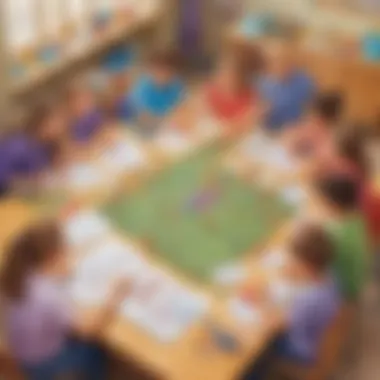
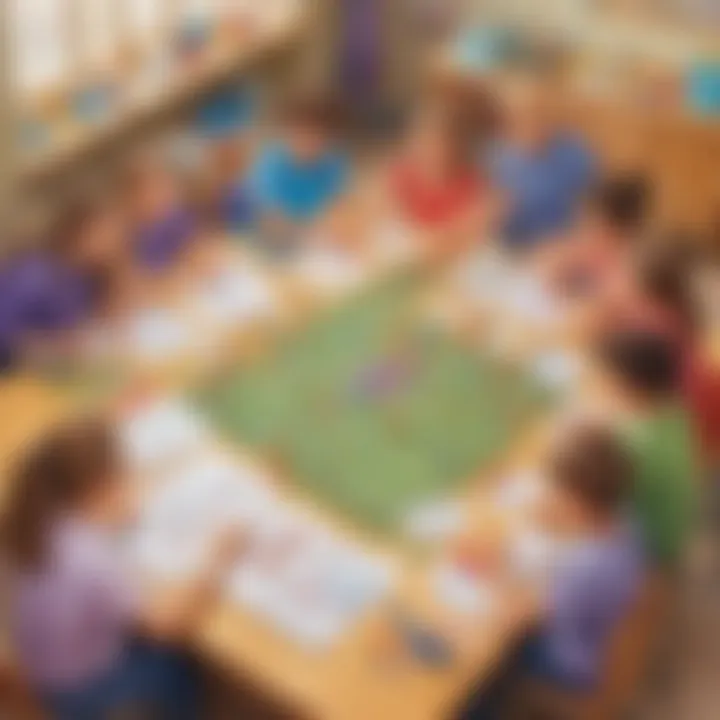
Another effective method of demonstrating the practicality of mathematics is through shopping scenarios. This environment allows children to engage with real math problems in a fun way. When kids go shopping with a parent, they can practice addition as they collect items, or subtraction when figuring out how much more they can buy with a set budget.
Here’s an example: if a young learner has a ten-dollar bill, and they see a toy for $7, they can learn to subtract that amount from their total money, coming to grips with basic financial literacy. It teaches them not only how to manage money but also illustrates budgeting—a vital skill in adulthood. Such activities inspire children to apply math creatively, realizing its relevance beyond the classroom.
By incorporating these real-life applications, educators can create an engaging atmosphere that transcends conventional teaching methods. This will not only pique students’ interest in math but also empower them with the skills they need for practical situations they will encounter throughout life.
Creative Storytelling Techniques
The realm of mathematics can often feel like a cold, hard world of numbers and equations. Yet, infusing creativity into math education through storytelling can warm it up, turning it into a lively narrative that resonates with young learners. Creative storytelling techniques not only capture the imagination of children, but they also help them relate mathematical concepts to their everyday experiences. When young learners see math through the prism of a story, it transforms abstract ideas into tangible comprehension, enabling them to grasp complex subjects more readily.
By weaving storytelling into math lessons, we harness the power of narrative. Stories can serve as a bridge that connects mathematical principles to real life. Perhaps, a child has never thought of fractions beyond slicing a pizza. But in a story about a party, where the main character must share pizza equally with friends, fractions can suddenly become a matter of urgency and collaboration. This approach encourages engagement and boosts motivation, making math not merely a subject but a thrilling adventure.
Some considerations for implementing storytelling in math education include the importance of relevance and context. Teachers should articulate how the story intertwines with the concepts being taught. Furthermore, allowing students to actively participate in the storytelling process can deepen their understanding and maintain engagement.
"Teaching with stories unlocks a door to creativity, allowing students to see and feel math rather than just compute it."
Math-Based Storybooks
Math-based storybooks are a wonderful way to create an interactive reading experience that leaves students buzzing with interest. Books like "The Very Hungry Caterpillar" by Eric Carle introduce the concept of counting through food, painting the act of mathematics with a delightful brush.
When choosing storybooks, look for those that layer math concepts into the narrative. Simple counting, addition, or even basic geometry can slide seamlessly into the story arc. Parents and educators can ask questions during reading sessions that stimulate discussion, such as:
- "How many apples did the caterpillar eat?"
- "What shapes can we find on these pages?"
This method not only enlivens storytime but also helps children see math not just as an isolated skill, but as a vital part of storytelling and understanding.
Creating Math Stories Together
Creating math stories together can be an exhilarating way to promote collaboration and confidence. Imagine a classroom where students brainstorm as a group to build a story that illustrates math concepts. In one instance, students could decide to build a narrative about a lemonade stand. They might incorporate tallies for sales, addition for total earnings, and measurement to find the right mix for their lemonade.
As they weave their story, they should express their ideas clearly and develop roles—some may handle the math, while others narrate. This variety in participation allows for a rich exchange of ideas and fosters critical thinking. Including visuals, such as drawings or charts, further enhances the engagement, making mathematical principles tangible.
Role-Playing Scenarios Incorporating Math
Role-playing offers an immersive experience where children can embody mathematical concepts in a practical context. Setting up scenarios such as shopping at a supermarket allows learners to engage directly with concepts like budgeting, pricing, and even change-making.
Having students play roles—like the cashier and the customer—gives them real-world skills, such as counting money or understanding currency through interactive dialogue. By acting out these scenarios, math no longer feels like just numbers on a page; instead, it becomes an experiential journey. Including collaboration among peers can lead to lively discussions, helping to reinforce their understanding.
To wrap it all up, integrating storytelling into math education creates an inviting atmosphere where children are encouraged to explore and inquire. Utilizing math-based storybooks, crafting stories together, and engaging in role-playing not only makes these concepts more relatable but also sparks the joy of learning. When math meets storytelling, it opens the door to a new world—a world where numbers tell stories and stories teach math.
Encouraging Collaborative Learning
Collaborative learning is an essential ingredient when it comes to teaching math to young learners. It builds connections among students, enabling them to solve problems collectively and develop critical social skills. In the context of math education, working collaboratively allows children to view challenges from different angles and grasp concepts that might otherwise remain unclear. Here’s how it can play a pivotal role in a child's educational journey.
Benefits of Collaborative Learning
- Enhanced Communication Skills: When students work as a team, they articulate their thoughts and listen to others. This back-and-forth makes for a richer understanding of mathematical ideas.
- Diverse Perspectives: Different students come with unique viewpoints and experiences. When solving a problem together, their varied insights can lead to innovative solutions.
- Increased Motivation: Group settings can stimulate engagement. Young learners often push each other to participate and share, making math feel less like a daunting task and more like a fun challenge.
Considerations for Teachers: To implement collaborative learning effectively, consider group dynamics carefully. Not every group will gel smoothly; dividing students into groups where each member can contribute their strengths yields the best results.
Group Projects and Team-Based Challenges
Group projects and team-based challenges show students that math is not just a solitary skill, but a shared language. By creating a math project that involves each student, educators foster a sense of ownership and accountability. These projects might involve real-world applications, like collecting data on the weather, budgeting for a class event, or even designing a small business plan that incorporates math principles.
\nJoin hands, and count together, for in collaboration, no number is too big to handle.
Tips for Engaging Group Projects:
- Use hands-on materials like blocks or charts for visualization.
- Set clear goals and roles for each group member.
- Encourage groups to present their projects to promote learning through teaching.
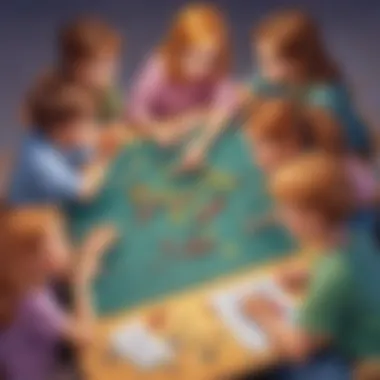

Peer Tutoring and Mentorship
Peer tutoring can work wonders in math education. Often, students may understand their peers better than adults because they speak the same language and can relate to each other's struggles and triumphs. When a child explains a mathematical concept to a friend, it solidifies their own understanding. This reciprocal teaching method naturally supports both the tutor and the learner.
How to Implement Peer Tutoring:
- Pair Strong Students with Those Who Need More Help: This not only boosts the confidence of the learner but also allows the tutor to refine their own skills.
- Focus on Specific Concepts: Have pairs work on particular problems or concepts, enabling targeted learning.
- Monitor Progress Together: Regular check-ins can assess both students’ growth and understanding.
Promoting Discussion and Problem-Solving Together
Incorporating discussion into math lessons helps students verbalize their thoughts, clarifying their own understanding while encouraging others in the group. Not all students learn the same way. For some, having conversations about mathematical concepts can unlock a deeper comprehension.
Ways to Foster Productive Discussion:
- Facilitate think-pair-share activities—students think through a problem, discuss it with a partner, and then share insights with the class.
- Use open-ended questions to ignite discussions. Instead of asking for a single answer, prompt students to explain their reasoning, “Why do you think that method works?”
- Create a safe environment for students to express their ideas. Encourage a culture of respect, where all voices are heard, and different solutions get consideration.
Feedback and Assessment Strategies
The role of feedback and assessment in math education cannot be overstated. This particular arena not only shapes how students perceive their own abilities but also helps educators tweak their teaching methods to better suit the needs of young learners. Feedback serves as a mirror and a map; it reflects students’ understandings and illuminates the paths they must take to navigate mathematical concepts more effectively. The right assessment tools can turn mundane activities into fruitful learning experiences, pinpointing areas where students shine and where they might need a little extra support.
Formative vs. Summative Assessment
When discussing assessment in education, it's crucial to distinguish between formative and summative approaches. Formative assessment is essentially a continuous process, taking place throughout the learning journey. This could be anything from quick quizzes, observational assessments, or even informal discussions that allow teachers to gauge understanding in real time. For instance, if a teacher notices that students are struggling with addition, they can shift gears and provide more hands-on activities to address that gap.
On the flipside, summative assessment occurs at the end of a learning unit, serving as the final evaluation. This often takes shape in standardized tests or final projects that encapsulate the learning objectives. Summative assessments provide a snapshot of what students have mastered and what areas may still be foggy. However, relying solely on these assessments can be a bit like trying to assess a swimmer’s skill by only watching them dive in at the end of a swim meet—there’s a lot that happens before that dive which may be missed.
Creating Engaging Quizzes and Tests
In this digital age, crafting engaging quizzes and tests can be a creative endeavor rather than a tedious task. The aim should be to make assessments not only a measure of understanding but also a valuable learning tool. Consider incorporating a variety of question types; multiple choice, true/false, and open-ended questions can cater to different learning styles. For instance, a quiz could include a problem-solving scenario where students need to apply their math skills to a real-life situation, like figuring out how many toppings they can get on their pizza while staying within a budget.
By utilizing platforms like Kahoot or Quizizz, educators can gamify assessments, making them more interactive and less intimidating. This invites students to view assessments as opportunities rather than stress-inducing tasks. The key is to balance rigor with enjoyment—too difficult and learners may disengage; too easy, and they may not be challenged enough. Aim for that sweet spot where learning happens.
Utilizing Self-Assessment Techniques
Self-assessment is a powerful tool that encourages young learners to take ownership of their educational journey. By teaching students how to evaluate their own understanding and progress, they develop skills in critical thinking and self-reflection. One effective method is to introduce simple reflection journals where students can jot down what they’ve learned, areas they feel confident in, and those that remain murky.
Another approach could involve checklists or rating scales where students can mark off what concepts they grasp or still need to work on. For example, after a unit on fractions, students might assess their understanding by scoring themselves on a scale of 1 to 5 for various topics like adding fractions, comparing fractions, etc. This not only boosts their self-awareness but also amplifies engagement in their learning.
Ultimately, Feedback and Assessment Strategies are integral in defining how effectively young learners can absorb and engage with math. By mixing formative and summative methods, crafting fun quizzes, and embedding self-assessment into routine learning, educators can create a robust framework that fosters both skill development and a passion for the subject.
Reflecting on Math Learning Experiences
Reflection in learning is like a mirror held up to not just the knowledge acquired but the process itself. Especially in the realm of math education for young learners, fostering this reflective practice can lead to significant benefits. It allows students to connect their experiences, understand their mistakes, and engage deeply with mathematical concepts beyond rote memorization. In an environment where educators encourage taking a moment to think back on what they’ve learned, students can develop a deeper comprehension of math.
Importance of Reflection in Learning
To put it simply, reflection solidifies learning. Young learners often find themselves drowned in numbers and equations, losing the bigger picture. When they take the time to reflect, they're engaging in a process that promotes critical thinking skills. Reflection helps answer the 'why' of math, allowing children to see how abstract concepts relate to real-world scenarios. This can create a foundation that supports more complex ideas in the future. Moreover, it fosters a growth mindset; reflecting means understanding that failure is just a step towards mastery.
"Reflection helps students connect past experiences with new learning; it enhances their problem-solving abilities and encourages independent thought."
Encouraging Students to Share Their Thoughts
Engaging students in discussions about their learning experiences is crucial. Teachers can create a safe space for students to voice their thoughts on what strategies worked or what didn’t resonate during lessons. Promoting open dialogue not only builds confidence but also reinforces their communication skills.
Some strategies include:
- Peer Discussions: Small group discussions can encourage shy learners to express their thoughts. They often feel less pressure in a more intimate setting.
- Class Sharing Sessions: Regular presentations where students can share what methods helped them solve problems can lead to collaborative learning.
- Questioning Techniques: Prompting students with questions such as "What did you find challenging today?" or "How did you solve that problem?" can nudge them to think critically about their learning process.
Using Reflection Journals for Continuous Improvement
Reflection journals serve as a personal space for students. In these journals, they can jot down their thoughts, mathematical challenges they face, and feelings associated with their learning. This ongoing practice helps in several ways:
- Tracking Progress: Looking back on past entries allows students to see how they have grown, providing motivation.
- Identifying Patterns: Journals can help students recognize recurring challenges in their mathematical understanding, prompting them to seek help where needed.
- Self-Assessment: Reflection journals serve as a tool for self-assessment, fostering a sense of ownership in their learning journey.
In summary, reflection plays a vital role in enhancing math education for young learners. Whether it’s through sharing thoughts or maintaining a journal, these practices not only aid comprehension but also build critical skills for future academic success.







